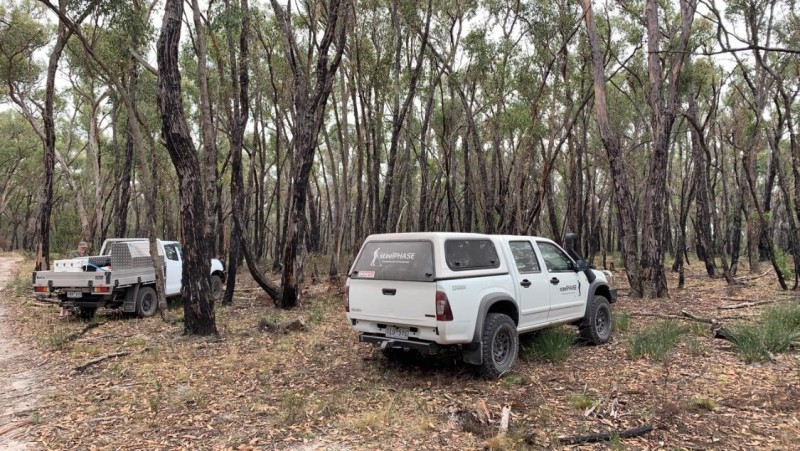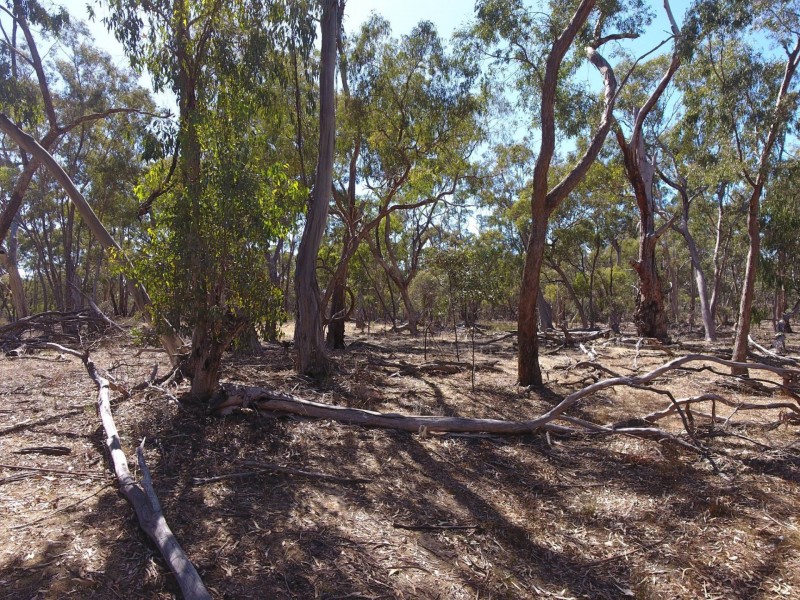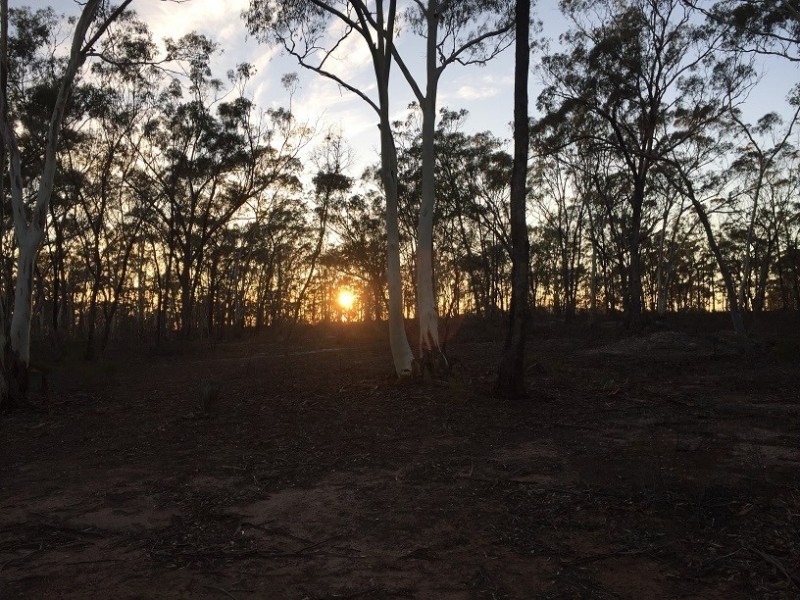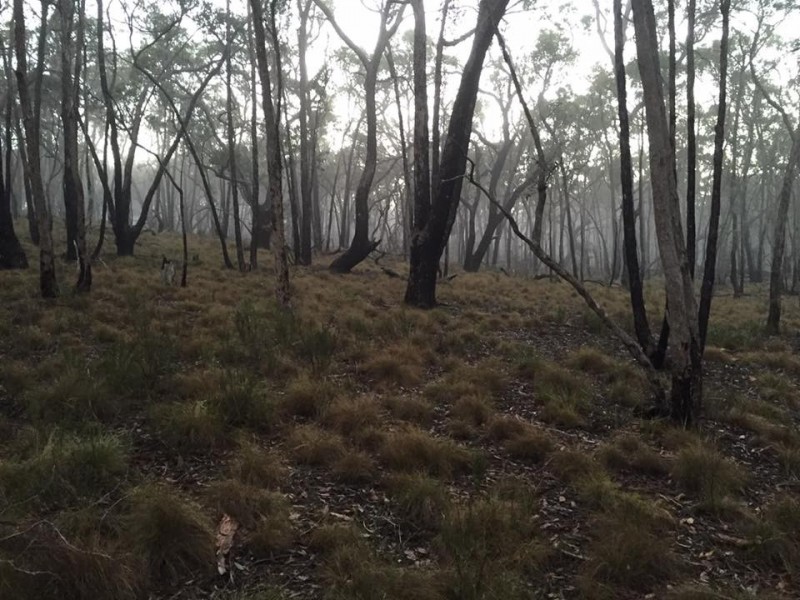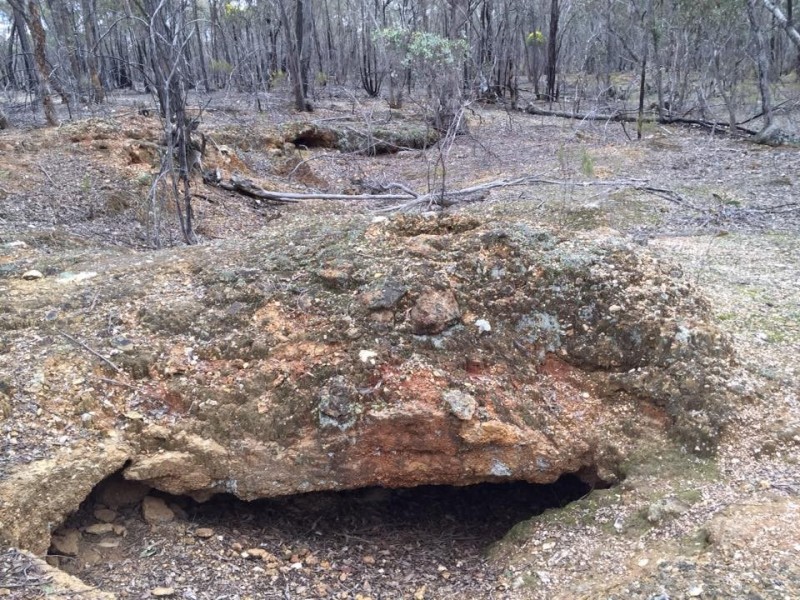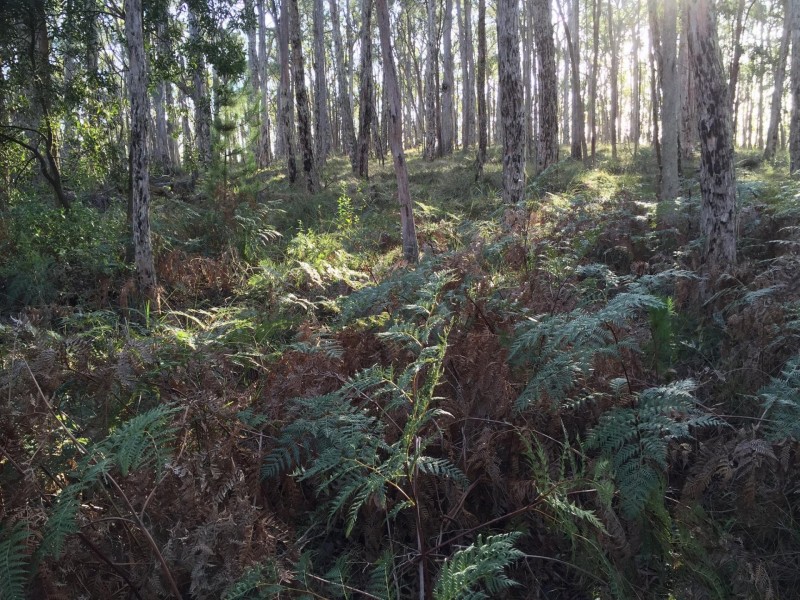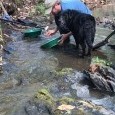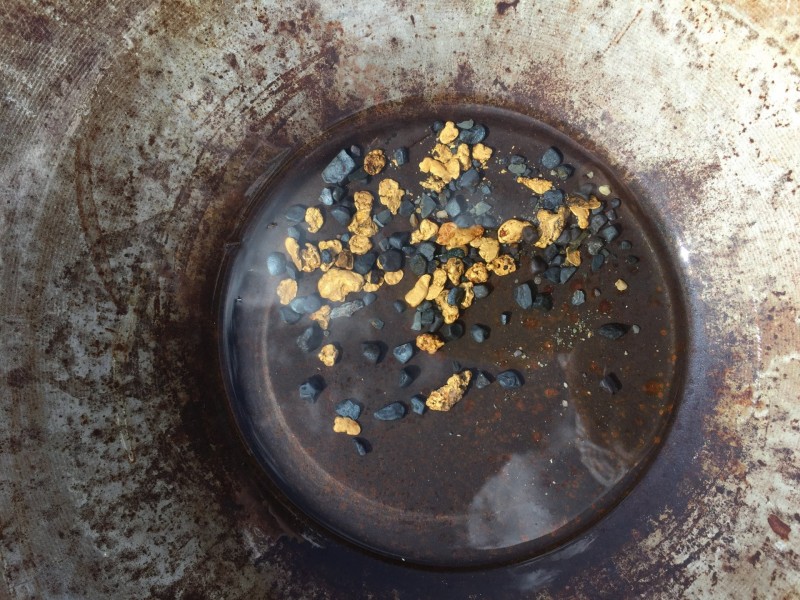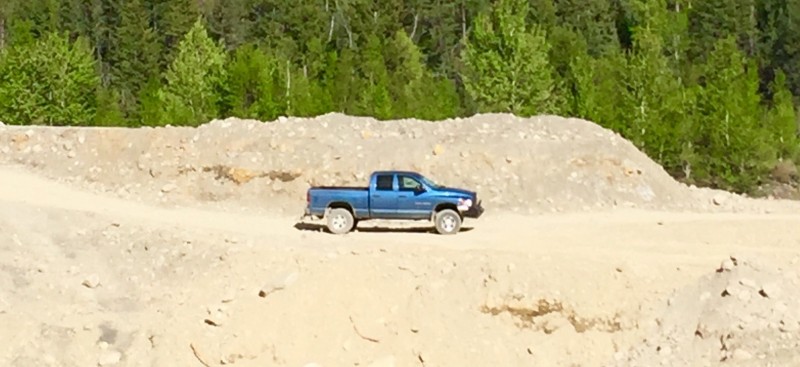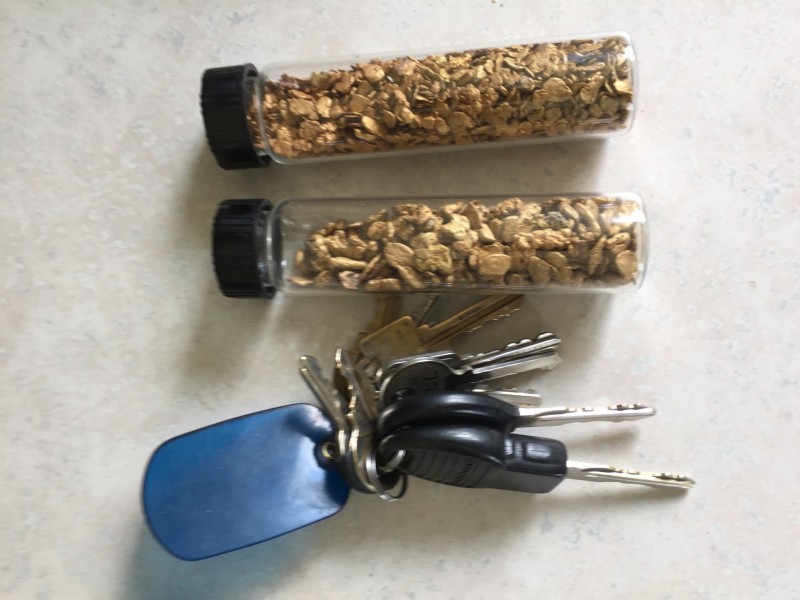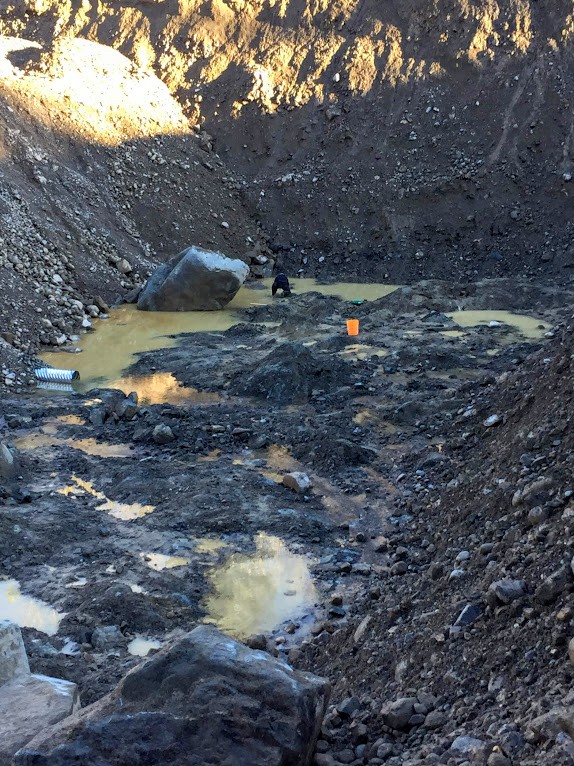Leaderboard
Popular Content
Showing content with the highest reputation on 02/26/2019 in all areas
-
14 points
-
I'm a little disappointed in the lack of West Coast Beach Hunter finds. I see the whole coast line getting slammed with storm after storm and high winds. Is this not the PRIME TIME to be out there swinging exposed layers of gravels and hard-pan? I know there has to be crusty black discs (silver coins) and the gimmer of gold beneath the coil. Show us you mighty few & faithful... as we inlanders are snowed in and football season is over. I know there has to be a select handful of hardcore detector abusers out there willing to brave the sharks. I've got me new CA style cowboy boots on and Equinox packed ready to go if the invite comes?5 points
-
The gold bearing greenstone belts of Sudan and NE Africa which launched the African detector boom roughly a decade ago are also found in southern Saudi Arabia. Same geology, same detector results.5 points
-
4 points
-
4 points
-
4 points
-
It finally stopped raining for a couple of days and I was able to get to the farm and try out the new ORX on a couple of old tenant house sites. These old sites date from around the 1930's or so based on the coin dates. They also sit on or near older sites so you are never sure what you will find. Coin deep was too sparky for me on these sites due to the massive amounts of iron and nails. I switched back and forth between Coin Fast at 15.2 and 28.8k, standard settings with iron tone "on". I found the 28.8 frequency to be my favorite. Once while running in 15.2k I noticed a small aluminum brad on top of the ground (about the size of a match head). In 15.2 I didn't get even a peep out of it. I then switched to 28.8 and got a nice loud tone. The separation in the extreme trash was excellent! My better finds for the day was 3 Wheaties, 1 War nickel, 2 Mississippi tax tokens, 1 Louisiana tax token, part of a broken spur, a broken tent tensioner, and one D Buckle. Thanks for viewing, MT3 points
-
Oh, I did forget to mention those giant roachs!!! I really, really hate those the most! fred3 points
-
Roots are actually a separate issue. Quite a few detectors will detected a large root for various reasons. Thunderstorms create a ground potential. Lightning as much leaps up from the ground as strikes downward. I could certainly see this as possibly creating issues in surface weeds. The GPX and GPZ can detect variations in the earth's magnetic field and lightning strikes many miles away. The receiver sensitivity is astounding. Source2 points
-
Here you go Fred. (I had no idea how long this would take . . .) Mountain scenery and that beautiful blue alpine sky. We grow tall mountains around here. The time of year when the bees get busy. Some of the ways the water moves around. All shut down getting ready for the move. Speed-panning wonder! This bedrock is heading uphill at an insane angle. My son trying a little high-banking, but he zeroed in that spot and quickly went back to detecting (just because a spot looks good, doesn't mean it is?). This bedrock has a great chance of hiding something . . . My robust, torquey blue mule. That diesel engine is just starting to get broke in (million mile Cummins wonders). My son cutting his teeth on the Minelab GPX 5000 (I hope his wife still likes me as he has a wonderful case of the fever!?). Look what the Gold Racer sniffed out: small stuff, and chunky pieces too! (The Bug Pro and the GPX accounted for a lot of sassy gold over the two days as well.) Some of the meat to go with the smaller potatoes. I think this picture says it all about the clichés about gold and rainbows. (Shot this picture from an excavation after a summer shower.) All the best, Lanny2 points
-
We don’t like to brag and show off our pull tab and bottle cap collections. Um....I don’t know what to say about those bootdals/sandoots but I’m with Ridge Runner on this one.2 points
-
Cane toads are nothing. Probably the only thing that freaks me a little while out in the bush is walking into a golden orb weavers web. They're not a little spider and their web is fairly strong so you tend to spend the next 10 minutes looking to make sure the spiders not in your hair or on your shirt. Although I do think they are relatively harmless. https://en.wikipedia.org/wiki/Golden_silk_orb-weaver The big inch ants are the other thing to watch out for. The suckers have big nippers that they use to hold on while they sting you with their tail. And they really hurt! https://en.wikipedia.org/wiki/Myrmecia_forficata2 points
-
Dang Pat you shouldnt have brought up the bears down there!!! The limbs are bad enough....2 points
-
Welcome to the forum - that is some very impressive gold! 2014 USGS Report - The Mineral Industry of Saudi Arabia "Gold.—In 2014, MGBM operated five gold mines in Saudi Arabia and mined 3.86 Mt of gold ore compared with 3.28 Mt in 2013; it produced 4,789 kg of gold in 2014, which was a 15.2% increase compared with the 4,158 kg of gold produced in 2013. Most of the increase was attributed to the entry of the As Suq Mine into production in March. Production by MGMB included about 1,506 kg from the Al Amar Mine, 1,685 kg from the Bulgah Mine, 1,066 kg from the Mahd Adh-Dahab gold mine, 449 kg from the As Suq Mine, and 84 kg from the Sukhaybarat Mine. The Al Hajar gold mine in Asir Province, which produced about 25 kg of gold in 2013, was mined out and closed and MGBM was exploring for copper and zinc in the mine area. MGBM was on track to increase its gold production to 15,550 kg (reported at 500,000 troy ounces) by 2017. Production increases were expected at all the company’s operating gold mines but most of the projected increase in gold production was expected to come from the Ad Duwayhi Mine, which is located in Makkah Province. The mine was expected to produce 2,177 kg in 2015, 4,354 kg in 2016, and 5,598 kg in 2017 (Saudi Arabian Mining Co., 2015a, p. 12, 69–72, 104–105; 2015b). JORC-compliant estimates of gold resources in the Central Arabian gold region of Saudi Arabia were about 272 Mt grading between 0.82 and 8.14 grams per metric ton (g/t) gold. Ma’aden’s Masarah gold project was part of the development in the Central Arabian gold region in 2014, which had a deposit containing about 22.3 Mt of resource at an average grade of 2.19 g/t at a cutoff grade of 0.8 g/t gold according to the prefeasibility study (Saudi Arabian Mining Co., 2015a, p. 104)." Placer gold deposits in the Hofuf Formation The Eastern Province of Saudi Arabia (large pdf report with color photos and many charts. 1981 USGS Report - GOLD PLACER AND QUATERNARY STRATIGRAPHY OF THE JABAL MOKHYAT AREA, SOUTHERN NAJD PROVINCE, KINGDOM OF SAUDI ARABIA2 points
-
2 points
-
Some got it and some got to go get it . With that foot ware I wouldn’t be caught dead in . Chuck2 points
-
They seem most likely to randomly drop limbs when it is stinking hot & calm. Obviously in strong winds & storms they come down, but those hot calm days I have been out bush and heard them crashing down. You would be bloody unlucky to get hit with one, but you never know.2 points
-
2 points
-
This NOAA website Interagency Elevation Inventory shows where, and what kind of LIDAR the U.S. government agencies have available. There are links to the mapped data downloads. Most of the green areas on the map are only about 3 foot resolution so they may or may not be an improvement on the existing DEMs. Open Topography is another good source for free lidar data. It's more international in scope. The Tahoe Basin Lidar set is very high resolution as PG-Prospecting pointed out. It looks like there are several nice sets in New Zealand. You can directly download a selected area at this website. You will probably notice that the coasts have some pretty good LIDAR coverage and quality but the west has been pretty much left out of the feds LIDAR efforts. It's always a good idea to check your State's GIS office to see if they have different coverage.2 points
-
I'm no subatomic particle physicist, but I am a vegetarian, and I haven't noticed any more charged particles than usual in my salad. Sorry Frozendaze, but I just couldn't resist!? Seriously though, I'm in the same neck of the desert and I haven't noticed anything out of the ordinary when swinging the Zed through the green stuff.2 points
-
Threshold blanking or nulling tells you two things if you choose to run the threshold where you can hear it. First, rejected items will blank or null as the coil passes over them. You know you have encountered a rejected item.Too much of this may alert you to a need to increase the recovery speed. On clean ground excessive nulling means you need to check your ground balance and sensitivity setting. An incorrect ground balance will throw off lots of ferrous signals, and if you have these rejected the machine will null constantly. Check the ground balance first. If this does not fix things, you may want to reduce the sensitivity setting. Excessive “blowback” from ground signals can cause target masking. These reasons are why I prefer to have a threshold sound - it keeps me better informed as to what is going on under the coil so I can adjust accordingly. Great post Mitchel!2 points
-
Was nice enough in the high 30s to look for a spot to dig that wasn’t snow covered, and I wound up at a creek side cellar hole that was pretty clear of snow. I decided to work the side wall to a bridge that used to cross the creek years ago. Not long into it I got a choppy high signal reached into the high 20s. As it was the same from every direction I New I had a high conductor mixed with iron. I had been over this ground many times with several detectors but until I used the equinox with the 6” coil I never hit on this. The pictures reveal a really fine condition 1817 large cent with a nice green patina on it and lots of fine details. One of the nicest large cents I’ve ever found for sure. Went home with a smile on my face1 point
-
Australia is full of things that bite and sting but all jokes aside, if you got worried about every little thing , you'd never leave the house. You have more chance of being hit by a car than getting seriously hurt out in the bush (as long as you use common sense). I wear snake gaitors sometimes, especially if wearing shorts. Not only for the snakes but they give protection against some of the undergrowth.1 point
-
Thank you Mr. Steve for providing this very important information that will benefit me in future searches I hope you have more information I also wish you good luck1 point
-
My first GPZ, about 3 years ago had a similar problem. In High Yield, Normal it would run great most of the day. In the afternoon when the battery was around 50% down it would sound off like you describe “detecting over a bed of tiny birdshot”. I could charge it at the car for 10 minutes and it would settle down until the battery was again down around 50%. I think an internal voltage regulator must have been failing. The replacement detector cured that problem. My standard settings are High Yield, Normal and 20 Sensitivity. Most of the time wet grass, mud and water have no effect. But in some areas at times I still experience the same severe effects in wet grass. Chet1 point
-
I'd like to meet up sometime Dave if we can and compare machines, I couldn't get my GPZ into HY at all, nor above 15 sensitivity, in places I hunted hundreds of hours in 2015 in the same settings you are using. I rarely ever had to go below 18 sensitivity or into general on my 1st machine. I have lots of it on video so I know I'm not simply misremembering, yet the Minelab repair cannot see a problem when I sent my machine in. They gave me a new machine and it has the exact same issue and I'd like to put a working machine on video to compare with mine if I can so I can try to get something resolved and get a working machine again. I am starting to wonder if there is something weird with the new batch of GPZ's now, or at least some of them. HY is like detecting in a lightning storm for me, zipping intensely all the time no matter what part of the country I'm in, even in the exact same washes I have on video from before, like I'm detecting over a bed of tiny birdshot or something even in the most mild, neutral ground. I thought it must be the weeds or the wet soil, but I don't think so now because I've hit some places bone dry with no weeds and same thing.1 point
-
1 point
-
1 point
-
I have it on good authority that the central coast and norcal coastal beach hunting was just not great as the sand wasn't being pulled off the beaches. Socal got some productive cuts, but up here just a few small pockets. We need the surf to pull the sand off the beaches up here to uncover the old deposits.1 point
-
I was looking for this kind of table that showed hardness of metals but didn't find one. I see you did. In the process I found there are many scales and sometimes the units don't match up. For example, Wikipedia lists hardness (Vickers and Brinell scales) for tungsten in MPa (Mega-Pascal) which is a unit of pressure. Your conversion table between Rockwells and Brinell has different units (which is what I was finding, too.) What I found curious with Mark's results was that he couldn't scratch the object with a knife or razor blade but then the Rockwell C hardness was only 33. That is well below knife steel (I think). That would be consistent with your concern that there is typically a large uncertainty around measurements.1 point
-
Hi.. We're going to need a bit more input from your chief machinist: Upon which scale is " 33 " based?, meaning Rockwell A, Rockwell B etc., not bathroom or gram.. The machine and method used too please.. It should be mentioned the " 33 " could be inexact regardless which scale was used, primarily due to during setup for greatest accuracy a painfully flat standardized material is used.. It takes only a slight variance at the subject test point to throw off the reading 10 points.. Just saying, while assuming accuracy.. I have no idea what " ID = 12 " is supposed to represent.. Not wanting to be a bummer here, merely pointing out we're still missing some vital information to name it and claim it.. Here's a couple charts that hopefully will be helpful up the road: Swamp PS: Gilding Metal = 95% Cu, 5% Zn..1 point
-
1 point
-
1 point
-
1 point
-
Gerry, If those are your boots, I shudder to think what your horse and saddle look like. ? Rich (Utah)1 point
-
I can confirm that the SoundPEATS “upgraded Q12 plus” do indeed connect with LL - I get the + on my NOX600. They are quite adequate in volume for me, in fact I have had to turn down the volume. These are the ones I ordered and received last week: https://www.amazon.com/gp/product/B07KLWS43V/ref=ppx_yo_dt_b_asin_title_o02_s00?ie=UTF8&psc=1 Happy hunting, Dave1 point
-
1 point
-
Gerry, You just made me find an allen wrench and take my handle off for the first time in over a year. I was surprised to find no sand and no corrosion. I just screwed it back together it was that clean. Good tip for some I think. Mitchel1 point
-
https://metaldetectingforum.com/showthread.php?t=50864 One problem I can anticipate is White's boards do change over time as component availability changes. The ultimate source for this sort of info is the Geotech Forums1 point
-
Golden Bonanza Days, Part 2:In the meantime, I’d finished all of my adjustments on the Racer, and I went off to investigate a different spot, some way off in the excavation from the area my son was detecting, as I had seen some little pockets of intact channel that had some spidery cracks in the bedrock running outward from them on my initial walkthrough. After a few swings (no kidding), I had the coil over a soft sound. A bit of scraping later, and I’d trapped the signal in my scoop. Into the pan it went. (Now, please remember that I use a super-magnet on an extendable wand whenever I detect bedrock [worked recently or anciently], so it really helps eliminate ferrous trash, and this means that any target that goes into the scoop is non-ferrous.) After a few more swings, I’d hit on two more targets that went into the pans for my wife’s speed-panning operation. Then, a slew of targets went into the pans.Meanwhile, as I was collecting signals, my son was busy adding more targets to his pans. (I had two pans to fill, and he had two pans for target material as well.)During our nugget hunting, my wife set up her panning station in a convenient bedrock pool of crystal water, water about the temperature of glacial meltwater by the way, and she was ready to get her panning gloves wet (she uses those little gardening gloves that have rubber palms and fingers with a canvas back as they insulate well enough to take the sting out of the coldness), so she wandered over to my son to gather a pan of possible goodness, and she swung by me to grab one of my pans too.(To describe the site in more detail, there was a sloped ramp that led down into the excavation where the rock trucks had run back and forth to be filled by the excavator. There were the remnants of a pad by the ramp where the excavator had sat during the last scraping of the dirt for the last cleanup, the pad having been moved up above the level of the excavation so the last of the pay could be scraped from the bedrock.In opposition to this, the far end of the excavation had been worked first, the work proceeding backward in the direction of the exit ramp until the cleanup reached that location. What remained in the excavation or open-pit site were ridges of rising bedrock, deeper excavated low-lying areas where the bedrock was soft [or areas of contact zones where soft bedrock met hard] or where ancient channel material had gathered in natural gutters or larger crevices, and there were pools of standing water [I always check these with a waterproof coil] where seepage had found a way to fill depressions or where runoff from springs on the margins of the excavation had filled low spots. On a related note, some of the bedrock had been bent and warped by tremendous geological forces in the past, and these places held little concentrations of material left over from when the bedrock was super-hard enough to resist the might of the excavator’s bucket.In a few places there were small sections of friable rock [in this case slate] that when found, I always detect first, then later pan as those plates of perpendicular placement [in 90-degree opposition to the underlying bedrock] act as excellent gold traps, traps that were working in earnest as the dinosaurs plodded across the ancient streambed when large sections of the planet were in a more tropical state.As well, there were those aforementioned contact zones, always excellent places to detect as small slices of the softer rock were sometimes in place against the harder rock, or there were ledges, sometimes terraced, with bits of material intact, and these traps often produce some nice gold. [On a related note, I learned a long time ago to trust my detector, not my eyes when scouring bedrock. What I mean by this is that oftentimes bedrock appears to be solid, especially when is is of uniform color, so it seems a better use of time to detect areas where visible intact material is concentrated, but this is one of Mother Nature’s grand deceptions, whether the bedrock has been worked by recent miners or mother rock worked by the Sourdoughs.Mining tip for the rookies: always, always, always take the time to go slow to let the detector read the bedrock contours and surfaces, to check the little invisible gutters and pockets, and yes, to find the hidden crevices that snapped shut when some monstrous dinosaur tromped on it while crossing, or more likely, when some massive boulders tossed along those streambeds, by some titanic hydraulic event, forced their will upon the yielding bedrock.To be continued . . .All the best,Lanny1 point
-
I’m no expert that’s for sure but I’ve noticed it too..... Everyone told me I was crazy, so of course I understood that. That Easily explained it1 point
-
Nerrina is ok but its close to Ballarat so gets hammered. Despite what he says, most are accessible using 2wd as long as you use common sense. Plus I never feel safe being too far from my car when near Ballarat. Too many idiots who love to steal stuff. The maps don't really give a feel of how big and diverse the goldfields are. This is just a small selection of different goldfields all easy driving from Melbourne1 point
-
This is the whole point of this thread, you need something like the B&Z to deliver better quality audio to your ears that the WM12 using its own speaker in combination with the Target Volume cannot do. IMHO the Target Volume controls of the GPX and GPZ are too coarse to give effective audio volume control, either through a directly connnected speaker to the battery on the GPX or the inbuilt speaker of the WM12. JP1 point
-
I make them. The raw data is generally out there for free, but you have to have the right programs and knowledge to be able to turn the raw data into something useful. Took me about 2 years to figure it out and im still refining it and learning better ways to do things.1 point
-
I ain't gunna push the like button till you finish the story.1 point
-
Golden Grams of Goodness: Part 3Even though the bedrock was super hard in that location, it did have some fractures, but it was a rare exception to find any breaks in the stone that had much depth due to the hardness of the rock. However, what that bedrock did have was lots of little gutters with bends indented into it, decorated with twists and dips, and those made for some great little gold traps for sassy pickers, lonely nuggets, and juicy flakes, and there was lots of gold to go around, and I do mean lots! (Pinnacles in the cut)When conditions would allow, we scrubbed the coils right tight on the bedrock listening for faint breaks in the threshold or for those aforementioned broader signals, and every time we’d get a hit, we’d shut off the detectors and go to work with the sniping tools. After cleaning the twists and turns of the little gutters, we’d detect them again and find gold that could now be heard because we’d removed so many ironstone chunks with the sniping tools and the super-magnets.However, the non-magnetic dark hot rocks (one less oxygen molecule from the magnetic ones I believe?) still caused trouble, but there were less of them compared to the the truly troublesome ones we’d got out of the way. (The iron bands couldn’t be dealt with by detecting though, and I’m sure we left gold behind along their edges when we finally ran out of time.) By continuing to scan the bedrock, we hit some nuggets in the 2-3 gram range as well, and a few bigger ones to boot—right sassy, beefy brawlers. Regardless of the bigger pieces, lots of flat nuggets were wedged down in any crack they’d been able to work their way into while travelling over that iron-hard bedrock, and we really had to work to liberate them. (Some smaller pieces of liberated gold)In addition, we took our time to carefully scan any clay or channel material that was stuck to the sides of those bedrock pinnacles I mentioned early in the story, and by careful scraping after we got a positive detector response along those sides (when we could), we captured a lot of additional pickers from their slopes. Having already learned from our previous finds in hot ground, we’d shut down the detectors after finding any detectable gold on around or near the base of the pinnacles as well, and it sure paid off with lots of nice gold we would have missed electronically. In retrospect, it was somewhat ironic that we had to revert to age-old gold gathering techniques used thousands of years ago because our modern electronic wizardry was overwhelmed and outclassed, but that just goes to show why it’s good to be well-rounded in gold getting techniques, with a healthy collection of excellent tools as well to use for specialized purposes; because, does anyone really know what they’ll be up against when Mother Nature’s been scheming and plotting to hide her gold?On a different note, we used the waterproof coils to search the bottom of the pools and we found some gold that way too, but not much as where the pools were, the bedrock had been softer which allowed the excavator buckets to dig deep. A Cheechako (greenhorn) and a Sourdough (seasoned miner) joined us in the excavation for a while, and they too found gold, with the lucky Cheechako hitting a nice multi-gram nugget (the size of my thumbnail) with his detector, a chunk that had been drug, with some larger rocks, off to the side of the bedrock drain that was channeling water into the culvert of the drain. We were happy for him, and happy for the Sourdough (a veteran of many a gold chase) too who sniped like a man possessed with the pure golden fever, a sight to behold! Well, he walked away with a nice catch of pickers and small nuggets in his bottle as he’d set up a little high-banker so he could process more material. However, neither of them came close to our tally in weight, but they sure had fun, and we did too.It was a great day, and I walked out with lots of nuggets in my gold bottle (that bottle had weight issues, good ones though) and my son did better than me as he went back the next day in the rain and rescued a third more gold than he’d gathered the previous day. As for me, I was content to just hunker down in my wet-weather gear and watch him have fun in the drizzle, and then I helped him haul his equipment out of the excavation up the boulder strewn slope back to the waiting 4X4 diesel. However, what should have been an easy exit from the site got highly sketchy in a hurry as the rain had caused a big slump right across the road by sliding muck down the north side of the excavation, with the mess beginning about seventy-five yards from where we were working. Moreover, it’s a good thing my diesel has lots of clearance or we’d still be glued there in the goo, but with the high clearance and the awesome torque of that diesel, it chewed us safely through. Now, if I’d have been in my gasoline-powered 4X4, which has lower clearance and not near the torque, it likely would have been a bad ending to a great gold trip. (Ironstone and gold) (High-torque, high-clearance blue mule.) All the best,Lanny1 point
-
I find it incredibly weird that Tesoro refuses to put out a statement on their website explaining what is going on. It’s not the Tesoro I used to know.1 point
-
Hello all! Based on requests from several folks who are curious, I went ahead and did some air testing with my new Minelab 6” coil, attached to my Equinox 800. I wanted to give some idea of the relative capabilities of this coil as compared to the 11” coil. While all the normal caveats of air testing apply – such as air-test results in no way mirror in-ground results, etc. etc. etc., I do think there is at least a little bit of value when doing side-by-side air testing of two different coils for comparison purposes. Anyway, how much value exists in such a test is up to each individual to decide; I simply wanted to provide the data. I also did a Youtube video, which I will post a link to as soon as it is done uploading. In the video, I did NOT record the testing of all the coins; I ran only the silver Roosevelt dime in the video to show you, audibly, what quality of signal I listened for in order to call it a “hit.” In other words, how repeatable of a signal I listened for before I assigned a depth value to that particular coin, with that particular coil. The rest of the video is just some discussion of a few points regarding the coil, and the testing. Anyway, here is the data… Minelab Equinox 800 11” and 6” coils, air-test comparison, done indoors Park 1 Mode Sensitivity 18 Noise Cancel Channel 7 All-metal mode (horseshoe button engaged) Ground Balance 0 Recovery Speed 4 (on the 800, equivalent to 2 on the 600) Iron Bias 2 (on the 800, equivalent to 1 on the 600) Here are the results: After this “apples to apples” comparison, where I tested both coils using identical settings, I then re-tested a couple of coins (specifically the silver dime and the silver quarter) on the 6” coil, but this time bumping sensitivity to 22. I found that I was able to run sensitivity about 3 points higher, as the 6” coil is (as expected) less affected by EMI. Since “18” is a rather conservative sensitivity for a 6” coil, (but that is as high as I could go with the 11” in my indoor testing, and since I wanted to keep it “apples to apples”), I wanted to see how much depth gain I would get on the 6” coil if I bumped sensitivity up some. Here are those results: In summary, you can see that the 6” coil (at 18 sensitivity) loses roughly 1 ¾” depth on each coin, in an air test, as compared to the 11” coil. You can also see that by bumping the sensitivity on the 6” coil up from 18 to 22, you “gain back” most of the loss of air-test depth, getting to within ½” to ¾” of depths achieved by the 11” coil, set at 18 sensitivity. SO…while you DO lose depth with the 6” coil, as expected, you may – in a real-world scenario – be able to gain most of that depth back, due to being able to run it at a higher sensitivity setting. Overall, I am thus far impressed with the coil, and can’t wait to use it “in the field,” where I can begin to get a feel for its REAL value – its ability to separate, in trashy sites. Steve1 point
-
As I was swinging tonight on the beach I remembered the experiments I had done in the afternoon. I had adjusted Iron Bias for the first time and played with Recovery Speed. I had run through many of the modes and sounds but didn't get out of Multi. This got me ready for the beach. When I got there the tide was coming in but on the way out I had found a 'ring' in the dry sand. It is the electrical fitting ring, not the kind you wear. I got down to the wet sand in the dark and finally had some interesting targets. They were 'easy' to hear compared to my previous uses and a couple of quarters to get started. Then the thought occurred to me that the 800 is like an instrument and I was 'playing the ground' with it. I could make the ground sound like I wanted it to so that is what I did. I experimented and I won't go into all the details but I thought about the base instrument, let's say a piano. I know what a piano sounds like. I also know what some of the sounds an electronic keyboard makes which enhances the keyboard strokes. What is the basic sound of the 800? I went to Beach 2 because I'm not going in the water diving anytime soon and I went to Recovery Speed and put it on 1. I put Iron Bias on 0. Tones are on 5. Now I have done Noise Cancel and Ground Balance. Sensitivity is set about 22. What does the 800 sound like? A cello or bass. I can hear everything because I have a little threshold. I feel like I'm moving a bow over the strings because the ground is moaning. The targets are coming thru in their normal fashion it is just that everything is 'long' and maybe this is was a smooth CTX sounds like because it uses slow recovery. It is nice to know so now I go to Recovery Speed 2. It is a big difference. All this time I'm thinking about the power of the 800 to see into the ground and salt water. All of the adjustments are filters on what we hear. I was pleased to hear it as smooth and I had it on all metal so I could hear the bobby pins. These settings helped me find the Canadian Dollar because it is magnetic and the magnet. There were a couple of jewelry pieces so I was pleased with that also. I'm not going to keep these setting everywhere because there are places where a fast recovery is needed but not on my beach tonight. I felt like it could see deeper but I didn't dig anything over 10 inches. Try the power of turning off most of the presets. As Kevin Hoagland once told me about my 5000 ... take that manual (as he was throwing it across the room) and shove it. Get a threshold and listen to the ground. He was right. I took the power and listened to the ground. Amazing. Mitchel1 point





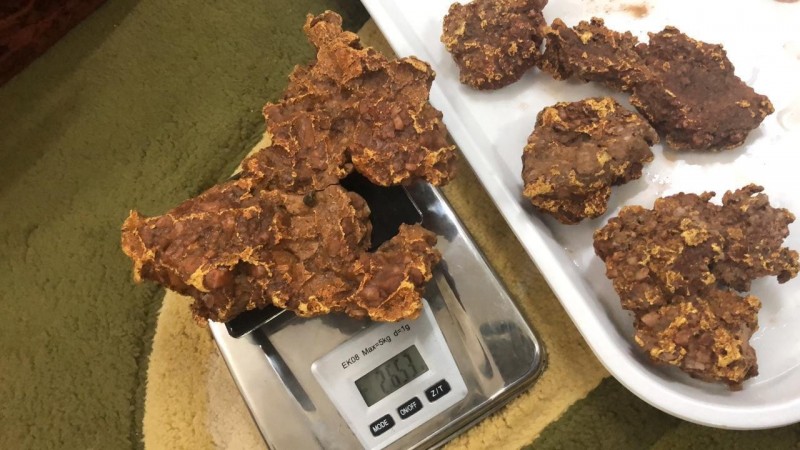



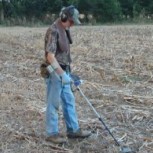

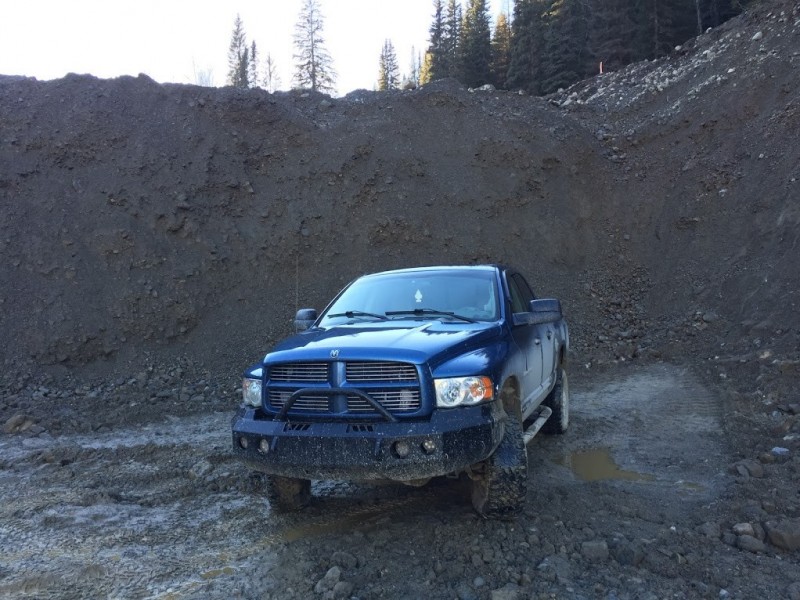
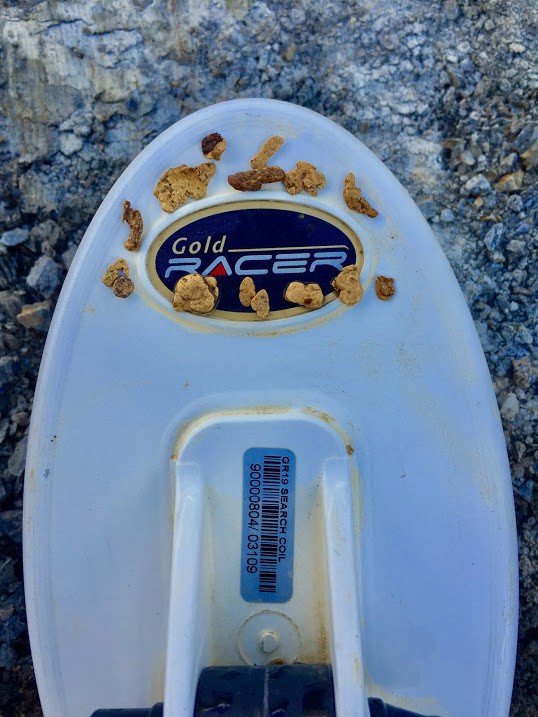




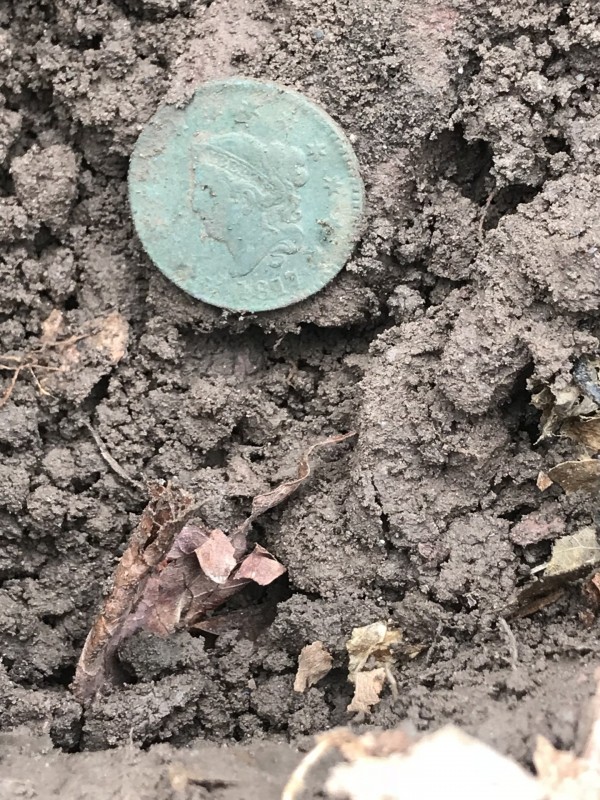
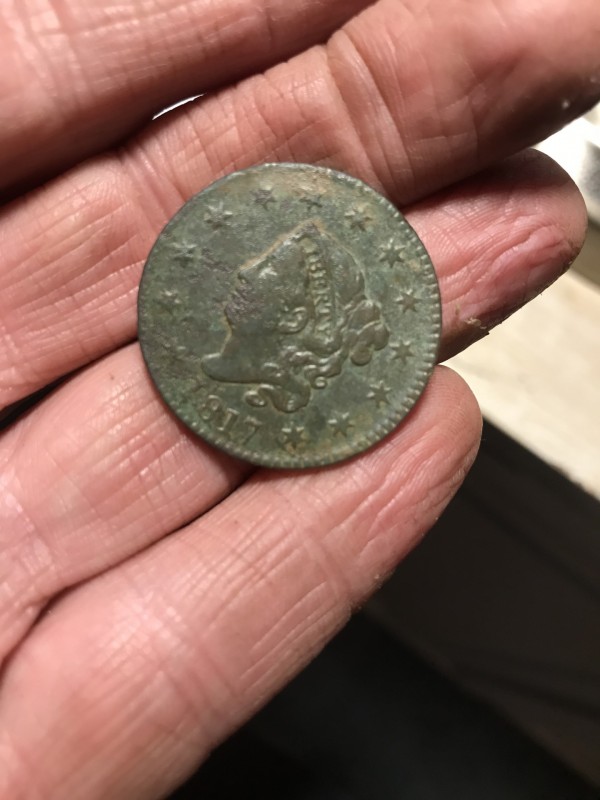
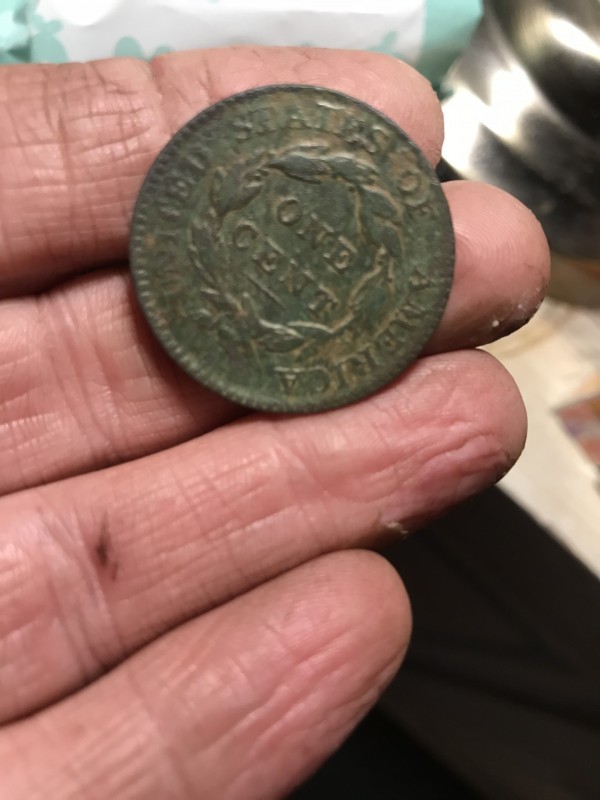



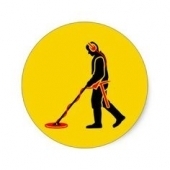
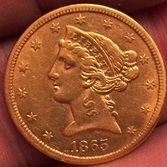





.thumb.jpg.fc135581785e7d5de836434eb31ac4e9.jpg)
